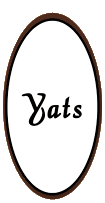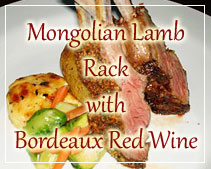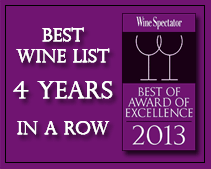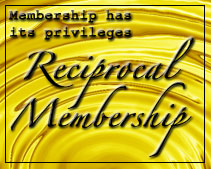Food in Korea
MARCH 9, 2011
The Choson Dynasty (1392-1910) marks the period when Korea’s culinary culture was refined. In the early part of the Choson Dynasty, agriculture books were also widely published. Moreover, researches in the fields of astronomy and meteorology began to invent new equipment to observe the celestial bodies and the weather, which contributed to improvements in farm cultivation. Significant strides in medical research were also made and they focused on the salutary benefits of a balanced diet which included a combination of rice, beans, vegetables, fish and meat. The traditional dining table was classified into a three-ch’op, and five-ch’op, and a seven-ch-nop table, depending on the number of side dishes (panch-an). On the table, food was arranged in order to promote a balanced nutrition.
Small amounts of medical herbs that were known to aid digestion were also sometimes added, particularly in the food of those who frequently suffered from indigestion. A variety of herbs were also mixed into water to make different kinds of healthful tea. These ingredients could be easily cultivated at home.
During the Choson Dynasty when Confucianism gained a stronghold in society, the culinary culture of Koreans underwent some significant changes. Since food preparation had to be made for many members of the household of varying ages, special techniques were required to cook and manage these large quantities of food. Women, for the most part, took on this burden among themselves. Also, given Confucianism family-oriented world view, special rites and ceremonies were often performed for family members, both living and deceased, and ceremonial food had to be prepared. in the course of preparing these frequent banquets, the families of the Choson period developed their own specialty foods according to regional and social standing. Variations in styles and preparation of these foods have certainly contributed to the variety of Korea’s contemporary culinary culture.
BASIC SAUCES
The basic sauces of most Korean homes during the Choson Dynasty were soy sauce, bean paste, barley paste, and red pepper paste. The soy sauce and bean paste were cured with soybean malts, barley paste with barley malts, and red pepper paste with red pepper powder and malts made of glutinous rice, bean and rice. Since many Korean dishes are seasoned with these sauces, they are the key to what makes Korean food taste Korea. Soybeans are boiled in the early winter to make malt, which is then dried during the winter season Between late February and early March, the malt is soaked in water and fermented for 60 – 100 days. Later, some portions of the malt is sterilized by heating and made into soy sauce; the remaining dregs become bean paste.
CEREMONIAL FOOD
During the Choson period, ceremonies were an important part of every family household and as a consequence, special goods for those ceremonies were developed. In particular, on the occasions of marriage and Hwan-gap, a special table-setting was arranged, which featured a variety of foods stacked to about 30-50 centimeters high in a shape of a big cylinder. It was a matter of course that long years of experience was needed to stack to products successfully. Of the many ceremonial dishes, rice cakes and confectionaries were popular.
Rice cakes, or ttok, are made of rice, and beans or other grains. In ancient times, rice cakes were eaten both during ordinary meal times and during ceremonies of rituals. It was only later, after the Three Kingdoms period, that rice cakes became primarily associated with ceremonial foods. Thus, rice cakes boast of a long tradition in the Korean history. Being indigenous and widely favored, there are many varieties. Rice cakes fall into three categories by cooking methods; steamed, and hen pounded, and fried. Most of them are made of rice, but other ingredients such as bean, red bean, chestnut, flowers, and herbs are also added to make variations of marvelous flavors, scents and colors. The records of Choson show as many as about 250 different types of rice cakes.
Traditional confectionaries are mostly made of wheat flour, honey and oil. Since these ingredients were rare in Korea, the confectionaries were prepared only for parties and ceremonies. Some popular traditional Korea confectioneries include yakkwa, kangjong, tashik, chon-gwa, yot-kangjong, and kwapyon.
Yakkwa is made of wheat flour kneaded with oil, honey and alcohol. The batter is fried and then dipped into honey. Yakkwa comes in different sizes and shapes. It was often made in the shape of flowers or fish, and during the Choson period, some yakkwa were prepared as large as 7 centimeters wide and long and 3 centimeters thick. They were displayed in stacked form.
Kangjong is made of glutinous rice flour mixed with alcohol. The batter is kneaded, divided, and then dried. The dried batter is fried and coated with honey.
Tashik (Powdered grains and pollen) is kneaded with honey and shaped into decorative molds. Beans, pine pollen, sesame, and rice usually used.
Chon-gwa is made of ginsen, Chinese quince, ginger, lotus root, steamed rice, and jujube, which are boiled in honey.
Yot-kangjong are roasted beans or sesame mixed with grain-glucose and then hardened.
Kwapyon is made from the flesh of strawberries, wide berries or cherries smashed up and hardened in honey.
TABLE MANNERS AND TABLE SETTINGS
From ancient times, Koreans have used a spoon and chopsticks are their eating utensils. The spoon was for scooping steamed rice, soup and stew, while chopsticks were used to eat a variety of prepared side dishes. Koreans are trained to use the spoon and the chopsticks correctly from childhood. Using both of these utensils at the same time is considered bad manners.
Meals were served on either high or low tables until the Koryo Dynasty. However, during the Choson Dynasty, the low table came to be predominantly used due to a type of under the floor heating system (ondol) that came into vogue at that time. The tables were often beautifully shaped and decorated. During the rituals and palace ceremonies, however, the high tables continued to be used, preserving the ancient tradition. Nowadays, the seated dining table with chairs is becoming popular while many families still use low tables.
A Traditional Korean Meal
Pansang is the usual meal of steamed rice, soup and side dishes.
Changkuksang is the main dish, and it is arranged with kimchi, cold greens, mixed vegetables, pan-fried dishes, confectionary, fruit and fruit punch. This simple meal can be served as lunch as well.
Chuansang – Alcoholic drinks (chu) and accompanying side dishes (an) are set on the table. The dishes vary depending on the kinds of liquor or wine.
Kyojasang is a large table prepared for banquets. Alcoholic beverages and a large variety of side dishes, rice cakes, confectionaries and fruit punch are all placed on the table. After the liquor is finished, noodle soup is served.
The Traditional Ceremonial Meal
Paegil (100th day after the birth of a baby) – Steamed rice, brown seaweed soup, white rice cakes, rice cake balls.
Tol (first birthday) – Steamed rice, brown seaweed soup, white rice cakes, rice cake balls, rice cakes of five different colors steamed on a layer of pine needles.
White rice cakes represent sacredness, rice cake balls, escape from misfortune, and rice cakes of five different colors, the five elements and the five virtues.
Marriage – The parents-in-law of the bride and bridegroom both prepare special dishes to express their mutual happiness and congratulations. The food includes fruit, confectionaries, and rice cakes which are stacked 30-60 centimeters high. This kind of table setting is called, “kyobaesang.”
Hwan-gap (60th birthday) – Kyobaesang is also prepared to celebrate one’s 60th birthday.
Source: http://www.asianinfo.org/asianinfo/korea/food.htm
Manila is fast becoming a city of luxurious fine dining accompanied by fine vintage wine. Not only must a 5-star Italian, French or Continental restaurant offer good food, nice ambience and immaculate service the restaurant wine list must be equally exciting to make the evening of wine and dine a memorable one.
This 5-star fine dining restaurant in Pampanga Philippines is highly recommended by food critics and frequent diners in Manila as a place to wine and dine in Subic Angeles City Clark Freeport Zone. Although it is a famous fine dining restaurant with an award winning 3000-line restaurant wine list, Yats Restaurant is also a popular restaurant for family with children. Aside from French Mediterranean haute cuisine, this restaurant also serves healthy food and the best vegetarian cuisines in the Philippines. Private dining rooms are also available in this restaurant for business and personal meetings of 4 to 20 people.
Favorites of frequent diners, foodies and wine lovers are steaks, Wagyu, Foie Gras, seafood, lobsters, venison, kangaroo loin, osso buco, veal chops, Kurabuto pork, escargots and a good selection of cheeses to enjoy with fine Vintage port and Sauternes. Cuban cigars such as Monte Cristo, Cohiba, Upmann, Partagas, Romeo Julieta and Trinidad are also available in the Magnum Room which is a wine bar and lounge for before and after dinner relaxation. A good selection of Armagnac, Cognac, Single Malt, Vodka and other liquor is served in addition to the wine vintage wines some served by the glass.
Built in 2000 by Hong Kong-based Yats International, a developer and operator of hospitality and residential projects in the Philippines, fine dining Yats Restaurant and Wine Bar has served not only as Pampanga’s highly recommended restaurant and wine lounge, but also as a place where business executives meet to finalize business deals over a nice meal with some fine vintage wine.
For comments, inquiries and reservations click on Click here for inquiry and reservations
Restaurant@Yats-International.com
(045) 599-5600
0922-870-5178
0917-520-4401
Ask for Pedro and Rechel
Getting to this fine dining restaurant of Angeles City Clark Freeport Zone Pampanga Philippines
How to get to this fine-dining restaurant in Clark Philippines? Once you get to Clark Freeport, go straight until you hit Mimosa. After you enter Mimosa, stay on the left on Mimosa Drive, go past the Holiday Inn and Yats Restaurant (green top, independent 1-storey structure) is on your left. Just past the Yats Restaurant is the London Pub.
Yats Restaurant & Wine Bar
Mimosa Drive past Holiday Inn, Mimosa Leisure Estate,
Clark Freeport Zone, Pampanga, Philippines 2023
Manila Sales Office
3003C East Tower, Phil Stock Exchange Center,
Exchange Rd Ortigas Metro Manila, Philippines 1605
(632) 637-5019 0917-520-4393 Rea or Chay
For any assistance in planning and organizing a wedding ceremony, indoor or outdoor garden reception or to find other wedding service providers, Click here to contact us click here
For assistance in hotel and resort bookings in Clark, Pampanga, Philippines, log on to
http://www.HotelClarkPhilippines.com
To buy wine in Manila, Pampanga, Angeles City, Clark or Subic please log on to http://www. ClarkWineCenter.com
To inquire with the highly recommended beach resort hotel in Clark Pampanga visit http://www.ClearwaterPhililippines.com
For more information about Clark, Pampanga, Philippines log on to
http://www.ClarkPhilippines.com









